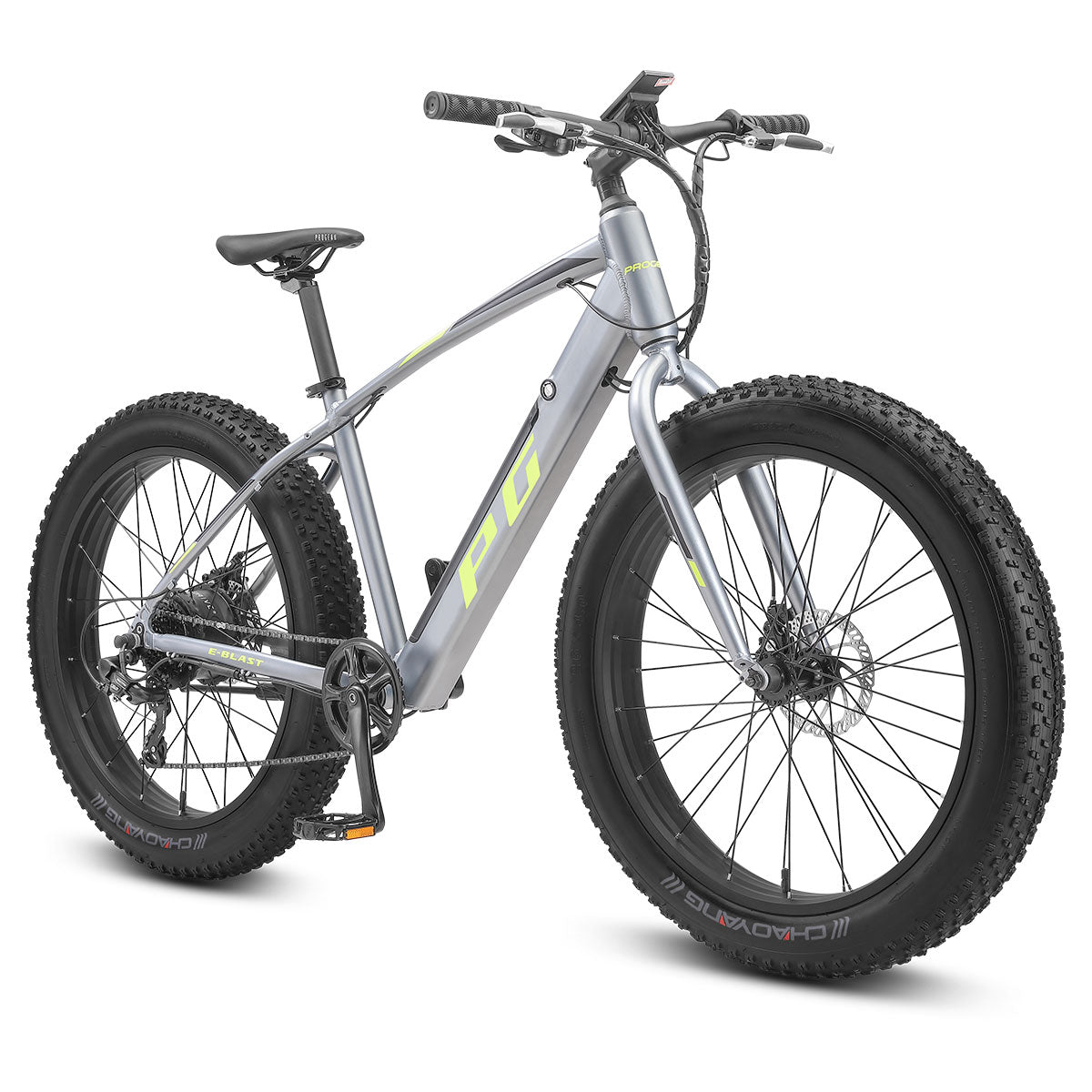Choosing the right bike can make a big difference to your cycling experience. Whether you're commuting through city streets, exploring rugged trails or racing competitively, selecting a bike that matches your riding style, terrain and abilities can significantly enhance your enjoyment and performance. Having the right bike ensures efficient pedalling, reduces the risk of injury and maximises comfort over short or long distances.
Two of the most popular styles that you'll encounter are road bikes and mountain bikes. As their names suggest, they're made for very specific environments either on paved roads or on outback trails. Your decision will make a big impact on your riding experience, so we're here to compare the two to help you make the best decision.
Road Bikes Overview

Road bikes are crafted for speed and efficiency, characterised by their lightweight frames and thin tyres. The frames, often made from materials like aluminium or carbon fibre, are designed to be aerodynamic, reducing wind resistance and enhancing performance. These bikes typically feature a forward-leaning riding position, promoting agility and speed, which is ideal for covering long distances swiftly. The thin, smooth tyres minimise rolling resistance, making road bikes perfect for paved surfaces such as city streets, smooth country roads and dedicated bike paths.
The primary terrain for road bikes includes any well-paved area, where their design allows for maximum efficiency and speed. They are not built to handle rough or uneven surfaces, as the lightweight structure and narrow tires are not suited for absorbing shocks from rough terrain.
For commuters, road bikes offer a quick and efficient way to navigate through urban environments, reducing travel time and providing a good workout.
Mountain Bikes Overview

Mountain bikes are designed to tackle rough terrains and challenging trails, characterised by their sturdy frames, wide tyres and suspension systems. The frames are built from durable materials like aluminium or carbon fibre, engineered to withstand the stresses of off-road riding. Wide, knobby tires provide excellent grip and stability on uneven surfaces, while the suspension systems—either front suspension (hardtail) or full suspension—absorb shocks from rocks, roots and other obstacles, ensuring a smoother ride.
Mountain bikes excel on a variety of rough terrains, including off-road trails, hills and rocky paths. They are specifically designed to handle the rigors of unpaved surfaces, making them ideal for exploring forests, mountain trails, and backcountry paths.
Typical uses for mountain bikes include trail riding, where cyclists navigate through rugged and often challenging paths. They are also popular for recreational cycling in nature, providing a means to explore and enjoy the outdoors. Adventurous riders use mountain bikes for exploring new trails and undertaking challenging expeditions, enjoying the durability and versatility that these bikes offer.
Pros & Cons of Road Bikes

Pros
Road bikes offer several advantages, primarily centred around their efficiency and speed. Designed to be lightweight, often with frames made from aluminium, carbon fibre or high-end steel, road bikes are easy to manoeuvre and accelerate quickly. Their thin tyres and aerodynamic design reduce rolling resistance and wind drag, enabling cyclists to reach higher speeds with less effort. This makes road bikes ideal for commuting, long-distance rides and on-road racing, where speed and efficiency are important. The lightweight design of road bikes makes them easier to transport and handle, especially in urban environments where frequent stops and quick movements are common.
Cons
Road bikes do have some limitations. Their design makes them less versatile compared to other types of bikes. The thin tyres and lightweight frame are not suited for rough or uneven terrains, limiting their use to paved roads and smooth paths. This makes road bikes less ideal for off-road adventures or even poorly maintained city streets. The forward-leaning riding position, while aerodynamic, can be uncomfortable for some riders over long periods, potentially causing strain on the back and neck. The materials used in high-end road bikes, while lightweight, can also be more susceptible to damage from impacts and require careful handling.
Pros & Cons of Mountain Bikes

Pros
Mountain bikes are celebrated for their ability to handle a wide range of terrains, making them incredibly versatile. Their sturdy construction, with durable frames made from materials like aluminium or carbon fibre, ensures they can withstand the rigors of off-road riding. Wide, knobby tires provide excellent grip and stability on uneven surfaces such as rocky trails, muddy paths and forest tracks. The inclusion of suspension systems, either front (hardtail) or full suspension, enhances comfort and control by absorbing shocks from obstacles like rocks and roots. This durability and terrain versatility make mountain bikes ideal for trail riding, recreational cycling in natural settings and adventurous expeditions.
Cons
Mountain bikes are generally much heavier than road bikes, which can make them slower and more cumbersome, especially on paved roads or smooth paths. The wide tyres and robust construction, while perfect for rough terrain, create more rolling resistance, reducing speed and efficiency on flat, smooth surfaces. The complex suspension systems and sturdy build can also require more maintenance and can be more expensive to repair. For cyclists primarily riding on paved roads or seeking high speed and efficiency, the added weight and lower speed of mountain bikes can be significant disadvantages.
Assessing Your Riding Goals
When choosing between a road bike and a mountain bike, it's crucial to assess your riding goals. Start by considering where and how you plan to ride most often. If your routes primarily consist of smooth, paved roads and you aim for speed, efficiency or long-distance commuting, a road bike is likely the best choice. Road bikes are designed for minimal rolling resistance and faster travel, making them ideal for city streets, country roads, and cycling events.
On the other hand, if you envision yourself riding on rugged trails, tackling hills or exploring off-road paths, a mountain bike would be more suitable. Mountain bikes offer the durability and traction needed for rough terrains, with wide tyres and suspension systems that provide comfort and control on uneven surfaces. They are perfect for trail riding, recreational outings in nature, and adventurous cycling.
Consider the distances you plan to cover. Road bikes are better for longer distances on paved surfaces due to their speed and efficiency, while mountain bikes are more comfortable for shorter, varied terrains. Reflect on your primary use cases—commuting, fitness, adventure or leisure—and match your choice to the bike that best meets those needs.
Consider Alternatives
If you find that neither a road bike nor a mountain bike perfectly fits your needs, there are several versatile alternatives to consider. Hybrid bikes combine features of both road and mountain bikes, offering a balanced mix suitable for both smooth roads and light off-road trails. With medium-width tires, a comfortable upright riding position and a durable frame, hybrids are great for commuting, casual rides and light trail exploration, making them an excellent all-around option.
Gravel bikes are another versatile choice, designed for mixed terrain. They feature wider tyres than road bikes, providing better traction and stability on gravel roads and dirt paths while maintaining the speed and efficiency needed for paved surfaces. Gravel bikes are ideal for riders who enjoy exploring a variety of terrains without sacrificing performance on the road.
Electric bikes (e-bikes) offer an additional layer of versatility with built-in electric motors that provide extra power. This assistance makes it easier to tackle hills and longer distances, making e-bikes suitable for a wide range of riders, from commuters looking for an easier ride to adventure seekers needing extra support. E-bikes are available in road, mountain and hybrid models.
Conclusion

Choosing the right bike ultimately depends on your specific preferences, riding goals and the terrain you plan to tackle. Road bikes excel at speed and efficiency on smooth, paved surfaces, making them perfect for commuters, long-distance riders and competitive cyclists. Their lightweight design and aerodynamic features ensure a swift ride, ideal for covering extensive distances with minimal effort.
Mountain bikes, on the other hand, are designed for versatility and durability, handling rough terrains like trails, hills and rocky paths with ease. With sturdy frames, wide tyres and suspension systems, they provide comfort and control over challenging landscapes, catering to adventurous riders and nature enthusiasts.
Alternatively, hybrid bikes, gravel bikes and electric bikes offer additional options catering to mixed terrains and varying levels of assistance, ensuring there's a perfect bike for every rider's needs and preferences.





















